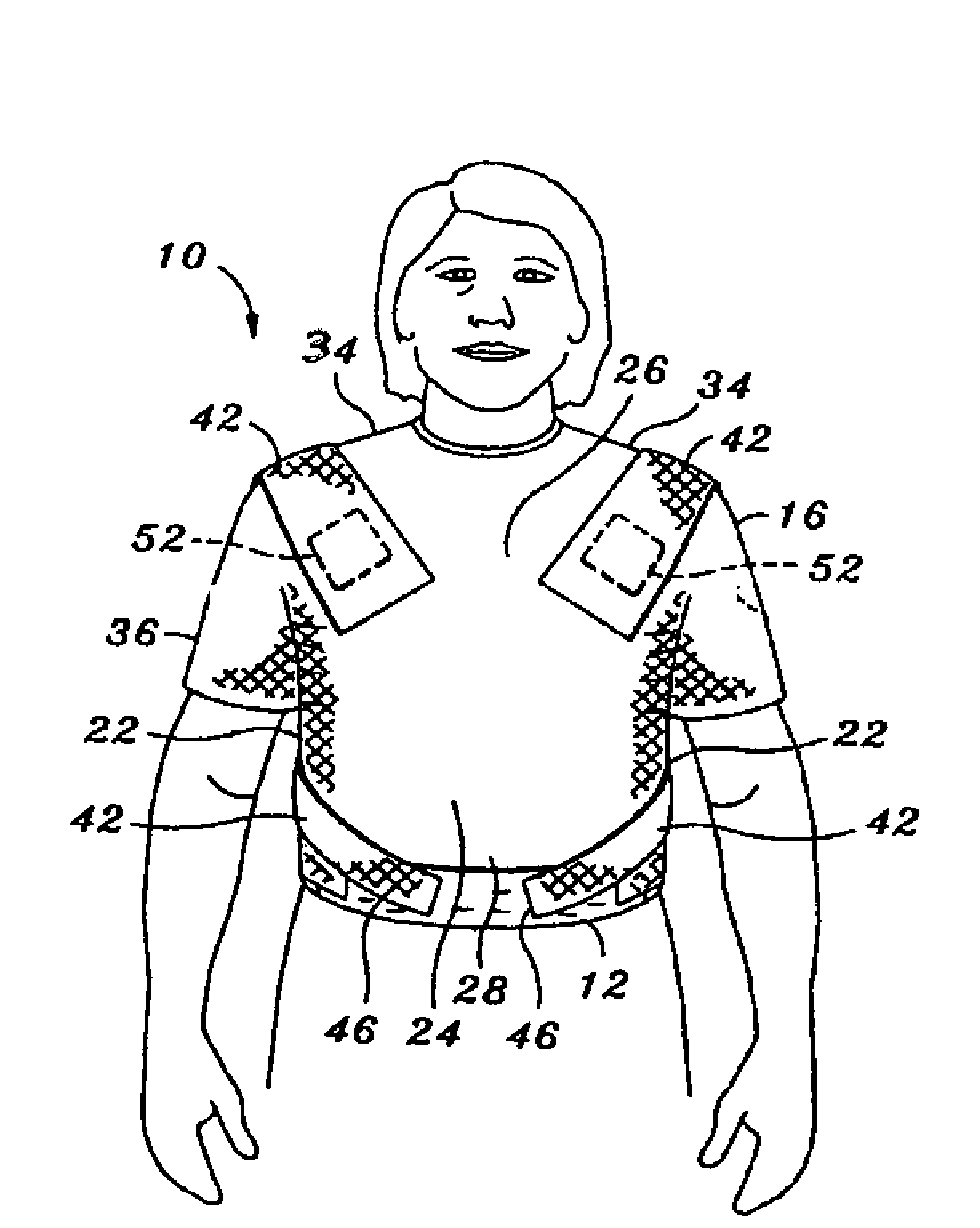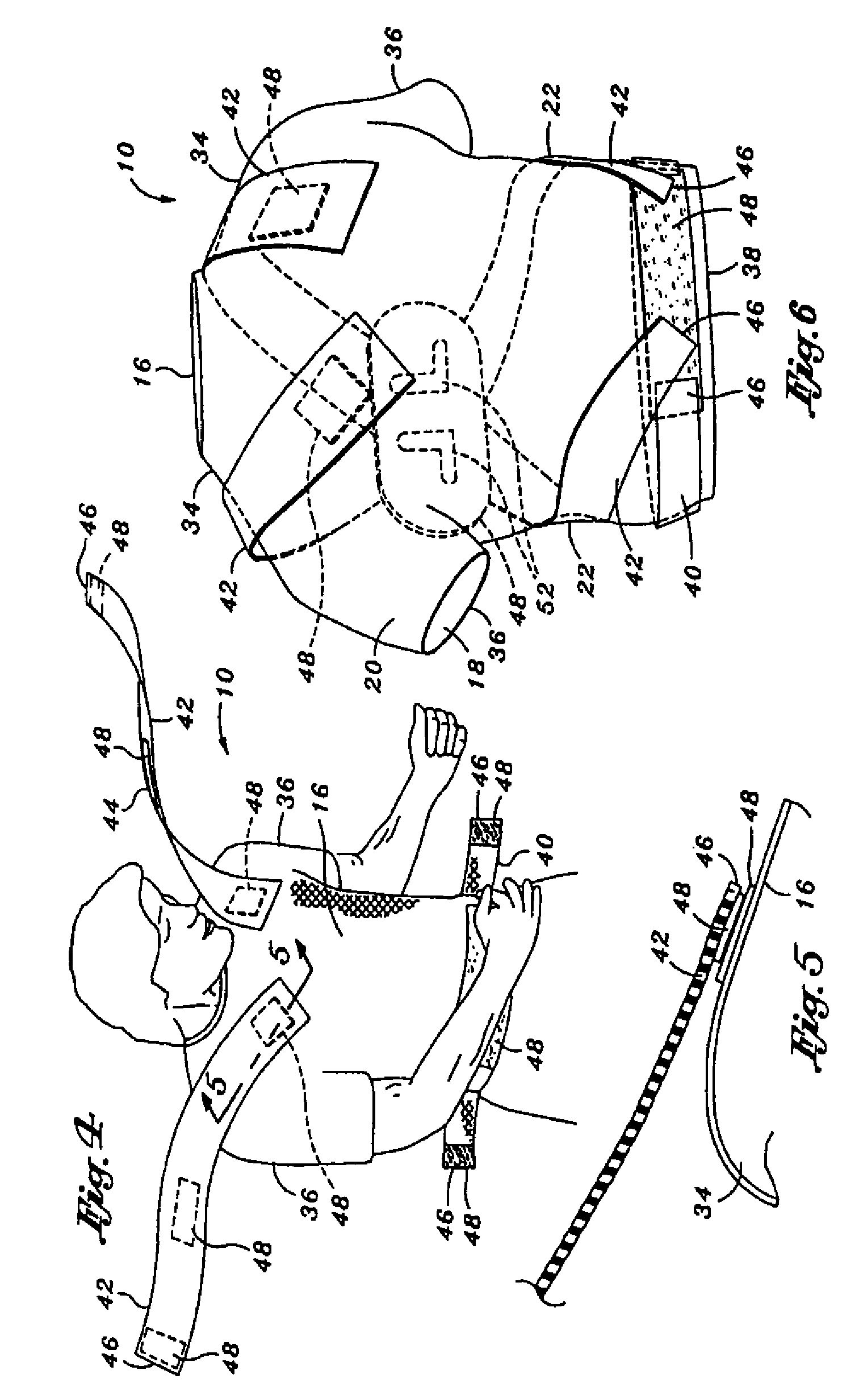Posture improvement device and method of use
a technology of a device and a body, applied in the field of body mechanics, can solve the problems of permanent shortening of muscles, poor posture, limited range of motion, etc., and achieve the effects of enhancing posture correction, preventing slippage, and restricting the movement of free ends on the chest portion
- Summary
- Abstract
- Description
- Claims
- Application Information
AI Technical Summary
Benefits of technology
Problems solved by technology
Method used
Image
Examples
Embodiment Construction
[0034]Referring now to the drawings wherein the showings are for purposes of illustrating the present invention and not for purposes of limiting the same, FIGS. 1-8 are views of a posture improvement device 10 in accordance with a preferred embodiment wherein the device 10 comprises a garment 16 configured to be worn by a patient and which is configured to envelope at least a portion of the patient's torso 12 and at least a portion of the patient's upper arms 14. In this regard, the garment 16 forms a shape commonly referred to as a short-sleeved undershirt or a T-shirt. The device 10 also includes a pair of elongate, extendable tension straps 42 releaseably secured to a back side 30, to a waist portion 38 and to shoulder portions 34 of the garment 16. The tension straps 42 are diagonally disposed relative to one another and are releaseably secured to the back side 30 of the garment 16.
[0035]Advantageously, the tension straps 42 are configured to be stretchable or selectively adjust...
PUM
 Login to View More
Login to View More Abstract
Description
Claims
Application Information
 Login to View More
Login to View More - R&D
- Intellectual Property
- Life Sciences
- Materials
- Tech Scout
- Unparalleled Data Quality
- Higher Quality Content
- 60% Fewer Hallucinations
Browse by: Latest US Patents, China's latest patents, Technical Efficacy Thesaurus, Application Domain, Technology Topic, Popular Technical Reports.
© 2025 PatSnap. All rights reserved.Legal|Privacy policy|Modern Slavery Act Transparency Statement|Sitemap|About US| Contact US: help@patsnap.com



